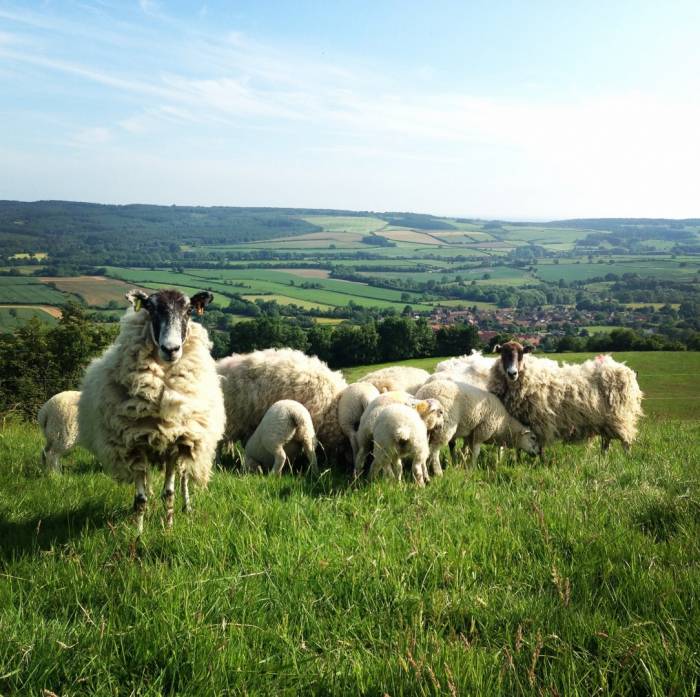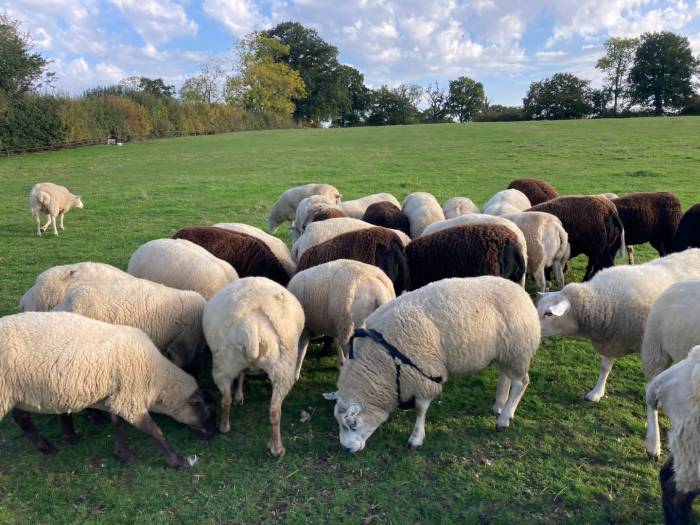As a result of exposure to worm populations when they are lambs, healthy adult ewes in good body condition have a very low worm burden, as their strong acquired immunity allows very few adult worms to remain in the gut. Therefore, it is not necessary to routinely treat adult sheep – at tupping or lambing time.
Dosing of ewes around lambing (the peri-parturient period) remains a common practice in many UK sheep flocks, as it was actively encouraged in the past as a way to counteract the ‘peri-parturient rise’. This rise is when the stress of late pregnancy causes a ewe’s immune system to wane (peri-parturient relaxation of immunity, or PPRI), allowing adult worms in her gut to produce more eggs. Those worm eggs, passed out in the ewe’s dung, contaminate the pasture grazed by lambs later in the season. The objective of using a wormer at lambing time is to reduce the level of pasture contamination and the subsequent challenge to lambs. It normally has nothing to do with the health of the ewe.
However, worming all ewes at lambing time in the hope of reducing the risk to their offspring is high-risk in terms of accelerating the development of anthelmintic resistance. SCOPS encourages reducing the proportion of ewes wormed to reduce this risk and help slow the development of resistance.
Historically it was assumed the extent of PPRI was mainly linked to litter size (i.e. the more lambs a ewe was carrying the greater the strain on her ability to maintain her immune response). This is the reason behind advice to leave single-rearing ewes untreated.
More recent evidence suggests ewes in low body condition and/or underfed protein in late pregnancy are most affected by the reduction in their immune response. Therefore, one way to reduce the selection for resistance in the worm population is to leave at least one in 10 of the fittest ewes untreated, to reduce the selection for resistance in the worm population.
But a better option is to use loss of body condition to identify ewes under the most nutritional stress and, therefore, more likely to produce a high number of worm eggs in their dung. In most flocks this means the proportion treated can be reduced by more than just one in 10 ewes.
Long-acting moxidectin 2% is often used to treat ewes at lambing time. While these products reduce egg output over an extended period, and therefore can reduce pasture contamination, they also mean the worm population is exposed to the active for longer. By only treating ewes that have lost body condition score, producers can target only those ewes likely to produce the most contamination, harnessing the potential of moxidectin while ensuring minimum selection pressure is exerted.
More information:-
The common practice of worming ewes before they go to the ram in autumn time is linked to the clean grazing systems of the 1970s and 1980s. These advocated treatment at tupping to prevent contamination of pasture for the following spring – but there is no evidence this has any tangible benefit, while we do know treating ewes for worms at this time of year selects heavily for anthelmintic resistance.
This is because of the small population of worms the ewe is carrying in autumn. Any worms that survive will enjoy a prolonged period or reproductive advantage, during which they dominate worm egg production. In addition, there is concern that removal of the ewes’ worm burden may temporarily reduce the strength of her acquired immunity, thus being counterproductive.
SCOPS recommends that only ewes in low body condition, immature females mated for the first time and or clinically affected ewes are treated pre-mating. Many flocks are now adopting this policy without any detrimental effect on performance.
Additional things to note:-
For more information on treating ewe pre-mating, see SCOPS Technical Manual. Chapter 2.7.6.

